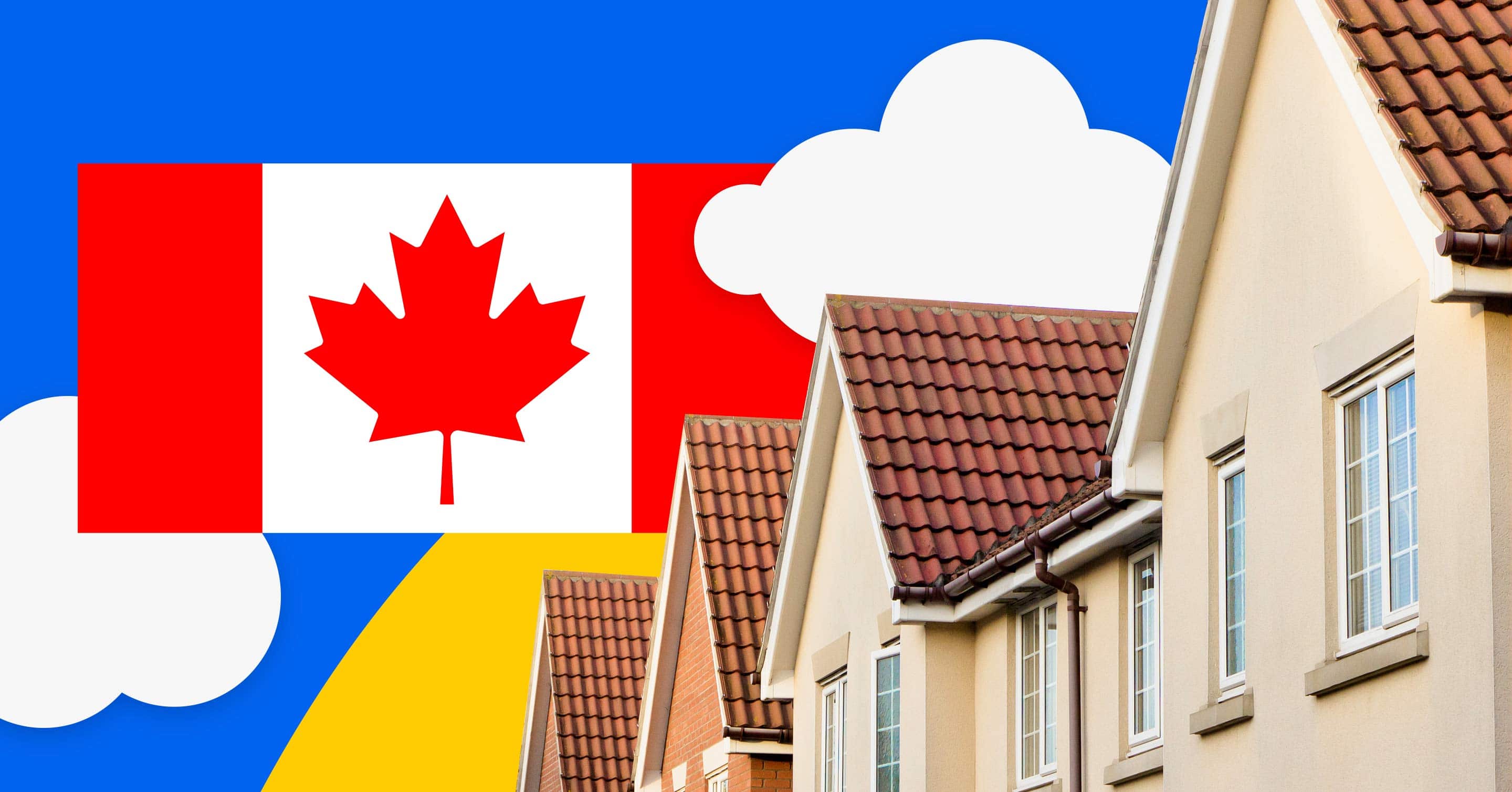How Much House Can I Afford?

Table of contents
Buying a home is a wonderful milestone that takes a lot of planning and consideration to ensure you can comfortably afford to make the transition to homeowner. One of the first questions potential buyers want to know is ‘How much house can I afford?’.
We’ve compiled some details for you below that outline critical information to keep in mind when determining mortgage affordability.
Key Takeaways
- As part of the affordability assessment process, mortgage lenders will take an in-depth look at your overall housing costs as well as any outstanding debt
- Your creditworthiness determines the interest rate you’ll pay on loans for every major purchase you make throughout your lifetime – from the mortgage on your home to your car loan to your line of credit
- Be sure to budget for closing costs, as they include a large variety of different fees and charges associated with the completion of your mortgage deal
Debt service ratios
As part of the affordability assessment process, mortgage lenders will take an in-depth look at your overall housing costs as well as any outstanding debt. Housing costs can be extensive and quickly add up – from property taxes and insurance, to heat, hydro and repairs, not to mention the cost of your down payment. In order to determine the amount they’ll lend to you, lenders are required to use calculations known as debt service ratios:
- Gross Debt Service (GDS) ratio. This determines the percentage of your gross annual household income required to own your home. Lenders estimate your annual mortgage payments (principal and interest), property taxes, heating costs and a percentage of condo fees, if applicable
- Total Debt Service (TDS) ratio. This is the percentage of your gross annual household income required to own your home, plus all other debts and loans. The calculation uses your GDS percentage and adds any other monthly payments you have including loans or outstanding credit card debt
Check out nesto’s Mortgage Affordability Calculator to see how much home you can afford and for more details on GDS/TDS ratios.
Credit score
Your creditworthiness determines the interest rate you’ll pay on loans for every major purchase you make throughout your lifetime – from the mortgage on your home to your car loan to your line of credit.
Your first step towards credit awareness and wellbeing is to know where you stand. Request a free copy of your credit report online from the two Canadian credit-reporting agencies – Equifax Canada and TransUnion Canada – at least once a year.
This will also help verify that your personal information is up to date and ensure you haven’t been the victim of identity fraud. 👆
Tip: If you use credit cards and lines of credit to your full advantage, you’ll never have to pay interest on these revolving credit products – you can use the borrowed money for free if the full amounts are paid on time every month.
Here are three key components that help determine your credit score:
- Credit card debt. Aside from paying bills on time, the number one way to increase your credit score is to pay down your credit cards so they’re below 70% of your limits. Credit card usage has a more significant impact on credit scores than car loans, lines of credit, etc
- Credit history. More established credit is better quality credit. If you’re no longer using your older credit cards, the issuers may stop updating your accounts. If this happens, the cards can lose their weight in the credit formula and, therefore, may not be as valuable. Use these cards periodically and pay them off
- Credit reporting errors. Always dispute any mistakes or situations that may harm your credit score. If, for instance, a cell phone bill is incorrect and the company will not amend it, you can dispute this by making the credit bureau(s) aware of the situation. Pay the bill on time and then dispute it, where necessary, so your credit score doesn’t take a further hit
See: Do You Understand Your Credit Score?
Beginning your home journey?
Start with a low rate.
Chat with a nesto expert today, commission-free, and secure your rate.
Mortgage down payment
Saving for the down payment on your first home requires diligence and patience, but it’s well worth the effort as taking the plunge into homeownership is both rewarding and financially satisfying when you begin building equity and wealth in your own property.
There are numerous down payment options available today to help get you into a home sooner. See: Your Down Payment Options When Purchasing a House
The minimum down payment when buying a home in Canada is 5% of the purchase price for a home valued at $500,000 or less and 10% for the portion of the purchase price above $500,000. See: How Much Do You Need for a Down Payment in Canada?
If you can make a larger down payment than the minimum requirement, your mortgage payments will be lower and it will take you less time to pay off your mortgage. The smaller your mortgage and the lower amount of interest you’ll pay over your time as a mortgage holder, the quicker you can build home equity.
Mortgage default insurance (CMHC insurance)
Mortgage default insurance is required for all mortgages with down payments of less than 20%. The insurance represents a security for your lender and protects them in case you’re unable to make your mortgage payments. Without mortgage insurance, instead of a minimum 5% down payment, you’d have to come up with at least 20%.
Mortgage default insurance is often referred to as ‘CMHC insurance’ because government-owned Canada Mortgage and Housing Corporation (CMHC) is one of three mortgage default insurance providers across Canada. There are also two private mortgage default insurance companies in Canada – Sagen (formerly known as Genworth Canada) and Canada Guaranty.
Mortgage default insurance is calculated as a percentage of the loan and is based on the size of your down payment. The higher the percentage of the total home purchase price and amount that you borrow, the higher percentage you’ll pay in insurance (ranging between 2.8%-4% of the total mortgage amount). See: Mortgage Default Insurance (CMHC Insurance)
Closing costs overview
Closing costs refer to a large variety of different fees and charges associated with the completion of your mortgage deal, including all legal and administrative expenses you’ll be responsible for paying leading up to, or on, your home’s closing date. It’s important to include these costs in your budget because, in most cases, they can’t be rolled into your mortgage payments.
Closing costs range depending on the specific property you plan to purchase but, as a safe estimate, set aside 5% of the purchase price as a buffer to cover these expenses. They typically amount to anywhere from 3-5% of the home’s price, but it’s always wise to err on the side of caution by saving more money than you need. Any surplus can be used to help furnish and decorate your new home, or put aside for future maintenance costs. There really is no such thing as saving too much. See: Closing Costs: What are They and How Much Will You Pay?💡
Important: Land transfer tax is one of the largest closing cost fees. The amount you pay is based on the purchase price of your home and typically only applies to resale properties.
Determining your mortgage payment
Your mortgage payment is comprised of two main components: 1) Principal and 2) Interest. Together, they make up the money you’re obligated to hand over to your lender every month to pay off the amount you borrowed to buy your home.
In the early stage of your mortgage, your lender will apply a larger portion of the payment towards the interest, with the remainder going towards the principal. Over time, however, an increased portion will be applied towards the principal until it’s paid off in full. Lenders use a standard formula to calculate these figures to ensure the right amount is paid in both interest and principal.
In order to determine your mortgage payment, you need to take into account the following:
- Amount – this is represented by the price of your home, less your down payment (plus mortgage default insurance, if applicable). The more you borrow, the higher your mortgage payment
- Amortization – if you have a longer amortization period, you’ll have lower monthly payments, but you’ll pay more interest over the life of the mortgage. A shorter amortization means paying off the mortgage faster, but your payments will be higher
- Frequency –how often you make your payments will affect the amount of each payment. Ex: monthly payment is a higher dollar amount than a weekly payment. When you make payments more frequently, your interest expense is reduced as the balance is lower at each moment the interest compounds.
- Rate – this is the interest charged on your mortgage. The higher the interest rate, the larger your mortgage payment. You can select a fixed-rate mortgage so that your payment remains the same each month, or a variable-rate mortgage where your payment fluctuates with the rise and fall of rates
Use nesto’s online Mortgage Payment Calculator to help assess the amount of your payments using different options/scenarios.
Other articles in this guide: “How Much House Can I Afford?”
- What’s an Ideal Debt-to-Income Ratio for a Mortgage?
- Do You Understand Your Credit Score?
- How Much Do You Need for a Down Payment in Canada?
- CMHC 2019 Federal Budget: What It Means to First-Time Homebuyers?
Ready to get started?
In just a few clicks, you can see our current rates. Then apply for your mortgage online in minutes!















